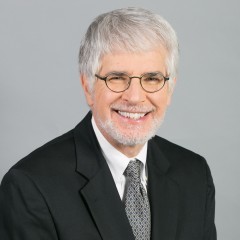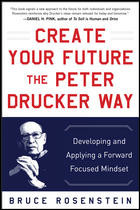 Guest Post by Bruce Rosenstein
Guest Post by Bruce Rosenstein
Most people are familiar with succession planning for an organization. Who is going to follow you as a leader once it is time for you to be replaced, and what must be done to prepare that person?
Succession planning is undeniably important. But if you grow and develop throughout your personal and professional life, and continually transform and improve yourself, there is the possibility that the person who replaces you can be yourself.
In other words, you can become your own successor.
I started developing the idea for this construct in 2011, when the Brazilian business magazine Administradores asked me who could be considered as successors to Peter Drucker, who died in 2005 at 95, as the leading management authority. He was at or near the top of management thinkers for many years, requiring him to continually change, learn and evolve. Because so much had been written about him since that time, and more of his own writing had been released after his death, I sensed that we understood his work in new and deeper ways and that this in effect qualified him as being his own successor.
What would being your own successor look like for you?
This concept requires a shift in thinking in application for your own life and work, and it is undeniably metaphorical and difficult to take literally. Thinking about how you can apply it can lead to breakthroughs, since it requires a different way of conceptualizing your role.
The easiest and most straightforward change would be a promotion within your current organization. You could also remain in your current position, but redefine or reinvent the way you work. Or you could leave your job for something new and different, perhaps more entrepreneurial.
Self-succession is built on a foundation of personal excellence and integrity. It requires non-complacency, focused introspection and the ability to change. Drucker’s example sheds some light on what is required to become your own successor.
Five areas of self-development to prepare yourself to become your own successor:
- Diversify your work: Drucker found many outlets for his writing (and the bulk of his career was in the pre-web era, meaning there were fewer outlets than we have now). He wrote more than 40 books and countless articles. The latter appeared in a variety of publications, including the Wall Street Journal, Harvard Business Review, Forbes, Fortune and The Atlantic Monthly. All this was in addition to his teaching and consulting; the latter balanced with work for high-profile companies such as Procter & Gamble and General Electric, as well as pro bono work for many nonprofits, including the Girl Scouts of the USA and the Salvation Army.
- Think and act globally: In an interview conducted seven months to the day before he died, Drucker told me that a highly important consideration for today’s knowledge workers was maintaining a global worldview. His books were published in more than 30 languages, and he regularly did worldwide lecture tours. His background was international: born in Austria, followed by college and work in Germany, more work in England and eventually a move to the United States when he was 28, where he lived the rest of his life.
- Stay relevant regardless of age: People are living longer and also working longer, by choice and necessity. We must devise ways to remain relevant to people of all ages, increasingly important as many generations co-exist in the workplace. Drucker never lost his sense of learning, in part to sharpen his already excellent work. Even with a Ph.D., he regularly did three-year self-study systems until nearly the end of his life.
- Keep producing a great body of work: We are moving from a world of self-identification through job titles to one more defined through an ongoing, ever-evolving body of work, especially work that is creative by nature, powered by innovative ideas. Your work has a cumulative effect, allowing you to build on what you have already done to create something new and different in the future. Drucker could not have written so many books if he did not build on the accumulation of his own wisdom, combined with serious ongoing learning and a keen sense of observation.
- Make sure your work benefits others: Practically everything Drucker wrote or taught about was predicating on helping individuals and organizations improve and become more effective. His writing about self-development and self-management made him a virtual personal coach to millions of readers worldwide. As you go about your daily work, stay focused on who will benefit from what you do, and how you can benefit different audiences in the future.
Becoming your own successor is not likely to happen overnight. However, now is a great time to begin this challenging process. What is the first step you can take on your journey?

Bruce Rosenstein is Managing Editor of Leader to Leader, a publication of The Frances Hesselbein Leadership Institute (formerly the Leader to Leader Institute and earlier the Peter F. Drucker Foundation for Nonprofit Management), and Jossey-Bass. He is the author of Living in More Than One World: How Peter Drucker’s Wisdom Can Inspire and Transform Your Life (Berrett-Koehler, 2009) and Create Your Future the Peter Drucker Way (McGraw-Hill, November, 2013). He worked for USA TODAY from 1987-2008, and since 1996 he has been an adjunct professor in library and information science at The Catholic University of America. Learn more about Bruce, and contact him at www.brucerosenstein.com
Note from Jesse: I am delighted to host this guest post by Bruce Rosenstein, author of the brilliant new book Create Your Future the Peter Drucker Way. Become your own successor is one of the concepts discussed in his book. No one understood what it means to create your own future better than Peter Drucker, and no one understands Peter Drucker better than Bruce Rosenstein. This easy to read and understand book will open a doorway to wisdom that you can easily put into practice in your organization and your own life. It is filled with actionable suggestions and a wealth of resources – a guidebook for a journey we all must take if we are to create the future we desire.













Great piece. When I teach mid-level managers I urge then to start thinking this way. The benefit? It teaches them even more about developing people. It allows them to take on bigger opportunities and get promoted. Plus, it’s a useful perspective for the occasional manager who is irrationally fearful of making their people look good.
Thanks, Alan; really glad you liked the guest post. And that is terrific that you teach people along these lines; the idea of perspective is so important. As you point out, there are lots of different aspects of this type of thinking, and let’s hope as many people as possible put it to good use!
Excellent post, Bruce. I’m a big Drucker fan. Drucker must have reinvented himself many times in order to stay ahead of the curve because in many ways, his teachings are more applicable now than they were when he first espoused them. Extending this to the idea of personal transformation is brilliant. I am already contemplating what it would mean for myself. I think it’s not as much about what I am going to do next, but who I need to become.
Thanks, Rick; I’m pleased that the post resonated with you, and that it dovetails with some of the things you are already thinking about and considering. And glad to hear that you are a big Drucker fan. I really like your distinction about becoming rather than doing. Provides us all with some nice food for thought.
Hi Bruce, I especially like your point #3 – staying relevant regardless of age. I am a baby boomer, not entirely comfortable with all this new technology, and especially find social media daunting. But here I am, reading blogs, and your article has inspired me to put more effort into it. Thanks to Jesse for hosting your post and introducing me to you. Your book sounds really interesting, and will be my holiday reading.
Regards,
Susan
Thanks, Susan; and I find it inspiring that my guest blog post has inspired you! Social media can be daunting, but I think if you carve out a section of it that makes sense for you, it will make things easier as you discover more of what you want to read, follow and contribute to. Jesse is awesome at social media; I learn things from her all the time that I can put to use in my own social media journey!